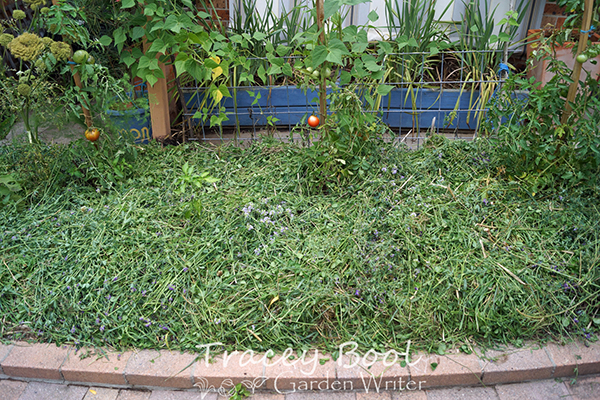|
Green Manure Crops
(14 March 2014) No, it’s not something a horse does when it’s been living it up in a paddock full of clover; a green manure crop is a versatile, living cover crop, which is ‘chopped and dropped’ into your garden. It is used to create a nutritious, soil improving mulch; to inject life into a tired vegetable plot and break inherent pest & disease cycles; and to protect exposed soil from erosion and weed invasion. The piece de resistance for me is that you are growing a sustainable, pesticide-free product in your own back yard which saves time and money! Traditionally, green manure crops are planted in our spring and autumn growing seasons. Plants used are fast growing, hardy and specially selected for their ability to add nutrition and bulk organic matter to the topsoil, mine trace elements from the subsoil, and encourage microbial activity. There are both annual and perennial species available, so for those of you a bit strapped for time, or who want to plant a crop amongst a more long-term planting, a perennial crop may be a better option. Plants from the legume (pea) family are particularly useful as green manure crops due to their ability to add nitrogen to the soil. They form a mutually beneficial relationship with the soil bacteria rhizobium, consequently fixing nitrogen in a form available to other plants. It is recommended you purchase seed which has been inoculated with rhizobium as not all soils contain it. I have a soft spot for white lupins and broad beans; the former because they are ornamental and the latter because they taste delicious. Ideally, plant your crop when growing conditions are favourable; that is, when temperature is optimum for chosen variety and soil moisture is adequate, and simply broadcast seed over the surface and rake in. Water with a rose spray (no need to water again until germination occurs), and put a light covering of mulch over the soil to protect it until the seed begins to germinate (not strictly necessary as germination times are as little as 4-7 days). Once the crop begins to flower, either use the ‘chop and drop’ method of leaving cuttings on the surface as mulch, or dig it into the top 10 centimetres of soil. You will need to wait around four weeks before planting into bed if you dig it in though. I find my rice knife an invaluable tool for harvesting green manure crops in my garden and feel quite the performer when using it. You could even audition for centre stage and try a scythe, but make sure you are wearing sturdy work boots and take a lesson or two from someone who knows what they are doing before taking your first swing. Seed is readily available online at Green Harvest Organic Gardening Supplies: www.greenharvest.com.au |

